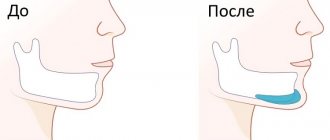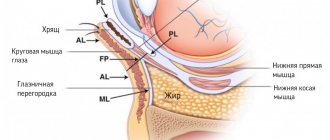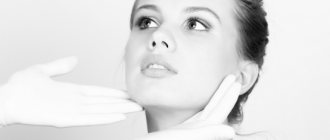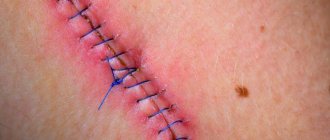Consultation with plastic surgeons with over 20 years of experience is free! Make an appointment by phone. Waiting for you! Non-surgical rhinoplasty is a minimally invasive method of nose correction using fillers and threads. The procedure is suitable for those patients who have minor nasal defects or are simply not yet ready for major surgery.
The non-surgical correction technique has both advantages and disadvantages that you should know about before deciding to undergo non-surgical rhinoplasty.
Contraindications
Like any procedure, non-surgical rhinoplasty has a number of contraindications. You must notify your doctor of any diseases, allergic reactions, or malaise. So, contraindications to non-surgical rhinoplasty:
- period of pregnancy and lactation;
- increased tissue bleeding;
- the presence of acute inflammatory processes in the body;
- elevated temperature, fever;
- infectious diseases;
- herpes (active form);
- decompensated form of diabetes mellitus;
- allergy to the drug used or its components.
What it is?
Septoplasty is an operation to correct defects and deformations of the osteochondral wall (nasal septum), dividing the nasal cavity into the left and right parts.
When the nasal septum is deviated, it moves to one side (usually to the left). Because of this, nasal breathing and the release of mucus from the sinuses are disrupted. Possible causes of a deviated nasal septum:
- physiological - sometimes a deviated septum occurs during fetal development or is caused by a hereditary predisposition
- traumatic - injuries to the face and skull can cause displacement of the nasal septum;
- The natural aging process can affect the curvature of the septum, in some cases this can lead to nasal obstruction.
Moreover, in infants such trauma can occur during childbirth.
Children and adults can suffer injuries that affect the curvature of the septum as a result of an accident. For example, during sports, rough games. Important! Deterioration of nasal breathing due to nasal curvature contributes to chronic inflammation of the paranasal sinuses, middle ear, bronchi and lungs, and impedes the outflow of venous blood from the brain. It is important to perform reconstructive surgery as early as possible in order to prevent the development of infectious complications and oxygen starvation of the body (hypoxia).
Figure 1. Top: Crooked nasal plate. Bottom: The same, but after surgery. Source: Mayo Foundation for Medical Education and Research
Advantages and disadvantages of non-surgical rhinoplasty
The non-surgical method of nose correction cannot be considered a full-fledged alternative to correction, since despite its attractive advantages, it has a number of features or disadvantages, which we always inform our patients about.
Advantages of non-surgical rhinoplasty:
- low invasiveness of the procedure. Non-surgical rhinoplasty is performed in a medical cosmetology office. Local anesthesia may be used if necessary; general anesthesia is not used. This type of rhinoplasty is bloodless, painless, and there is virtually no recovery period (swelling, pain);
- price. The cost of installing threads or injecting fillers in the nasal area is an order of magnitude lower than traditional surgery. You have the opportunity to save on an expensive operation;
- the opportunity to see the approximate result of a surgical operation. For example, raising the tip of the nose.
Disadvantages of non-surgical rhinoplasty:
- temporary effect (in most cases, the result lasts no more than a year, and repeated correction will be necessary). With a surgical operation, the result lasts for life;
- inability to greatly change the shape of the nose. Removing the hump, changing the width and size of the nose is impossible with this technique. Only a small “disguise” of existing problems is possible.
Crooked nose after rhinoplasty
Most often, patients with congenital defects of this part of the face come to surgeons to correct a crooked nose; there are also those whose nose was damaged after a fracture or injury . But especially difficult cases are patients who have already undergone rhinoplasty and were not satisfied with the results. In this case, the surgeon during the consultation determines how serious the damage to the nose is and whether the patient’s dissatisfaction is caused by misconceptions about the result of the operation. Earlier than six months later, repeated surgery on the nose cannot be performed - all tissues must heal, all scars must form and turn white. Then a plan is drawn up on how to correct a crooked nose in a girl or guy: the operations are identical, but the healing processes proceed differently.
A guy’s crooked nose after rhinoplasty is normal. He will accept the look that the surgeon planned only 6 months after the operation. Therefore, patients are warned that the nose will immediately look swollen, with bruises and bruises.
Additional materials:
Swelling after rhinoplasty Bloodless rhinoplasty
Operation technique
Thread correction
Non-surgical rhinoplasty with threads is effective if the patient would like to slightly shorten the length of the nose and smooth out the hump.
Threads are often used for non-surgical rhinoplasty of the tip of the nose: it can be raised with the help of such a correction. This is a fairly common request in our clinic.
The result of non-surgical rhinoplasty with threads will be visible immediately, but will last no more than 1-2 years.
If desired, the patient can repeat the procedure before the effect wears off.
The non-surgical rhinoplasty procedure is performed by a cosmetologist in a modern medical office. Local anesthesia is used. Threads (APTOS, Dermafil Happy Lift, etc.) are inserted through micropunctures into a specific area of the nose (wings or tip). Next, the doctor performs a “lift” of the required area: thus, it is possible to give the nose the desired shape. You will be able to see the effect immediately after the procedure, but it is better to evaluate the final result after 2-3 days, when the slight swelling has subsided.
Crooked nose after a hit
What to do with your nose after a blow? Go to the emergency room and assess the consequences. It is possible for tissue and cartilage to heal in such a way that a defect remains after a fracture in the form of curvature. The nasal septum is weak cartilage, and it doesn’t take any fantastic effort to deform it. One good hit is enough. Often, a broken nose with signs of healing is demonstrated by athletes of power sports and extreme sports; most often such injuries occur in guys. What to do if a guy has a crooked nose? There is only one way to fix it - surgery. During a consultation with a plastic surgeon, the degree of deformation of the nose and its curvature is determined, tests and studies are prescribed to determine whether there are contraindications to surgery. Rhinoplasty can be open or closed. With the first method, you can fix a broken nose by accessing from the outside, and with the second, through the internal cavities of the nose. The operation is performed under general anesthesia. An incision is made, excess tissue is cut off, and the cartilage is aligned. The wound is then sutured and the nasal passages are blocked with tampons. A fixing bandage is applied to the nose. Within a few weeks, swelling and bruising disappear from the tissues. But the final result becomes noticeable only after six months.
How does the nasal septum correction process work?
This surgical intervention is performed in the ENT department as planned: after the examination, the patient is admitted to the hospital. The procedure takes about an hour. If the postoperative period is calm, you can return home the next day and undergo recovery on an outpatient basis.
Photo: Archives of plastic surgery / Open-i (Attribution-NonCommercial 3.0 Unported)
Result
Such rhinoplasty without surgical intervention immediately changes the appearance for the better, and the final aesthetic effect can be seen after just a few days, when the false volume caused by swelling has completely disappeared. This minimally invasive method corrects a number of defects :
- depressions, irregularities and asymmetry;
- drooping, ugly upturned, too thin tip;
- the back is flat or with a hump;
- irregular shape of the bridge of the nose;
- scars, unaesthetic consequences of injuries and operations;
- saggy, flabby soft tissues.
In these cases, a targeted impact on the problem area allows you to avoid a more traumatic operation. If it is still necessary, the corrective procedure offered by the CONSTANTA Clinic, which is temporary, that is, reversible, will make it possible to see whether the surgical intervention will bring the desired aesthetic effect. Also, the technique should be used in cases where the operation is currently impossible due to medical contraindications or the patient has not reached the age of majority.
Effect duration
How long the corrective effect will last depends on:
- the selected drug;
- the nature of the problem being solved;
- individual characteristics of the patient's skin;
- his age and lifestyle.
The choice of a cosmetic product and the accuracy with which it will be introduced are determined by the professionalism of the doctor performing the manipulations. Qualified specialists of the CONSTANTA Clinic, who have undergone the necessary training and are fluent in the technique, will perform a procedure that guarantees the longest lasting effect. We use substances specifically designed for this purpose, which have proven their safety in a number of clinical trials and have received favorable reviews from our patients.
The average resorption time for fillers is 8-12 months. It depends on how quickly your body processes the received substances. Considering that the nose is the least mobile part of the face, this process, and therefore the resulting aesthetic effect, can last up to 2 years. This is much more effective than similar manipulations to eliminate wrinkles or enhance lips.
Symptoms of a deviated nose and nasal septum
A slight degree of curvature is visually almost invisible and is not accompanied by unpleasant symptoms. With severe deformation, you can find:
- uneven volume of tissue on the wings of the nose;
- curvature of the tip;
- different size of nostrils;
- S-shaped bend of the nasal bridge.
External defects do not cause physical discomfort, while a deviated septum provokes real problems:
- nasal congestion without signs of rhinitis;
- constant headache;
- night snoring with temporary pauses in breathing (apnea);
- pain and congestion in the ears;
- nasal voice;
- constant coughing;
- runny nose that does not go away;
- tendency to colds and ARVI;
- frequent sneezing;
- dryness of the nasal mucous membranes;
- decreased hearing acuity;
- soreness and sore throat;
- wheezing and difficulty breathing.
Constant lack of air due to the need to breathe through the mouth leads to disruption of cardiovascular activity, changes the secretion of mucous membranes, and reduces brain function. All this negatively affects well-being, performance, and psycho-emotional state.
Most of these symptoms are associated with various ENT diseases, so patients learn about nasal curvature during an examination for ear infections and nasopharyngeal diseases. And then they come for a consultation with plastic surgeons.
Possible complications:
Photo: Allergy & rhinology (Providence, RI) / Open-i (Attribution-NonCommercial-NoDerivs 3.0 Unported)
- uncontrolled bleeding;
- infection;
- perforation of the septum;
- changing the shape of the nose;
- impaired sense of smell;
- temporary numbness of the gums of the upper dentition;
- hemorrhage under the mucous membrane of the septum.
Indications
In mild cases, when the deformation of the septum does not interfere with the movement of air, surgery is not indicated. Surgical correction is necessary if:
- breathing through the nose is so impaired that the quality of life suffers;
- sinusitis (inflammation of the mucous membranes of the paranasal sinuses) recurs;
- frequent nosebleeds;
- significant cosmetic defect;
- pronounced snoring.
Figure 2. On the left is a deviated septum.
On the right - healed, after surgery. Source: houstonadvancedsinus.com Sometimes septoplasty is performed as a stage of a complex operation to correct maxillofacial malformations (cleft palate or cleft lip).
Diagnostics
An ENT doctor may detect a deviated septum during an examination. Bright light and a nasal speculum are usually sufficient to make the diagnosis. If concomitant pathology of the nasal structures is suspected, a computed tomography scan is prescribed.
Before the operation, the following examinations will be prescribed:
- clinical and biochemical blood tests;
- chest x-ray (especially important for patients over 45 years of age, smokers, and those with heart or lung disease);
- electrocardiogram.
Causes of a crooked nose
There are three main reasons.
- Physiological is the most common problem. Asymmetry develops gradually during the active formation of the facial skeleton in childhood. Chewing has a great influence on the proper growth of cartilage and tissue. For example, during the period of change from milk teeth to permanent ones, the chewing load is distributed unevenly, which is why the facial bones become thicker in those places where the pressure is stronger.
- Post-traumatic is another cause of curvature. Often, injuries lead to displacement of the cartilage inside the nasal passages, even in the absence of external signs.
- Compensatory – occurs quite often. Asymmetry develops due to the presence of foreign bodies and enlarged polyps in the nasal cavity. The cause of curvature can be various infectious diseases and errors during operations.
The most difficult cases are associated with the consequences of unsuccessful rhinoplasty. Many patients turn to the surgeon again due to an unsatisfactory result: the formation of lumps, protrusions and even greater curvature than it was before the intervention.











